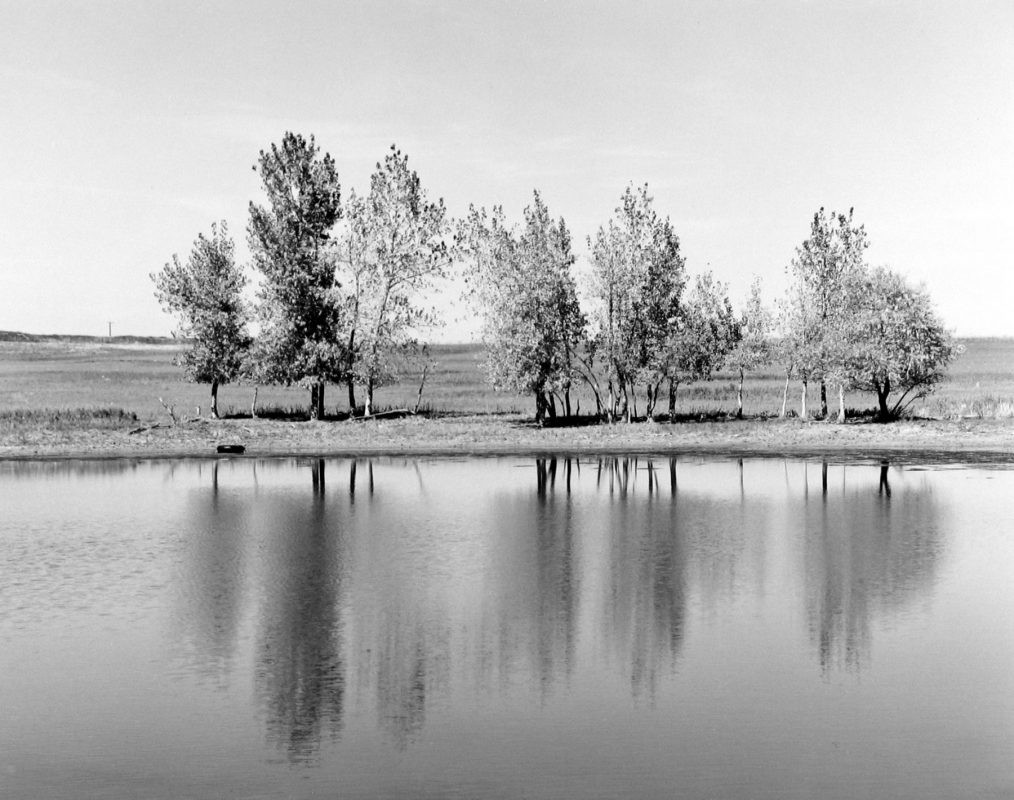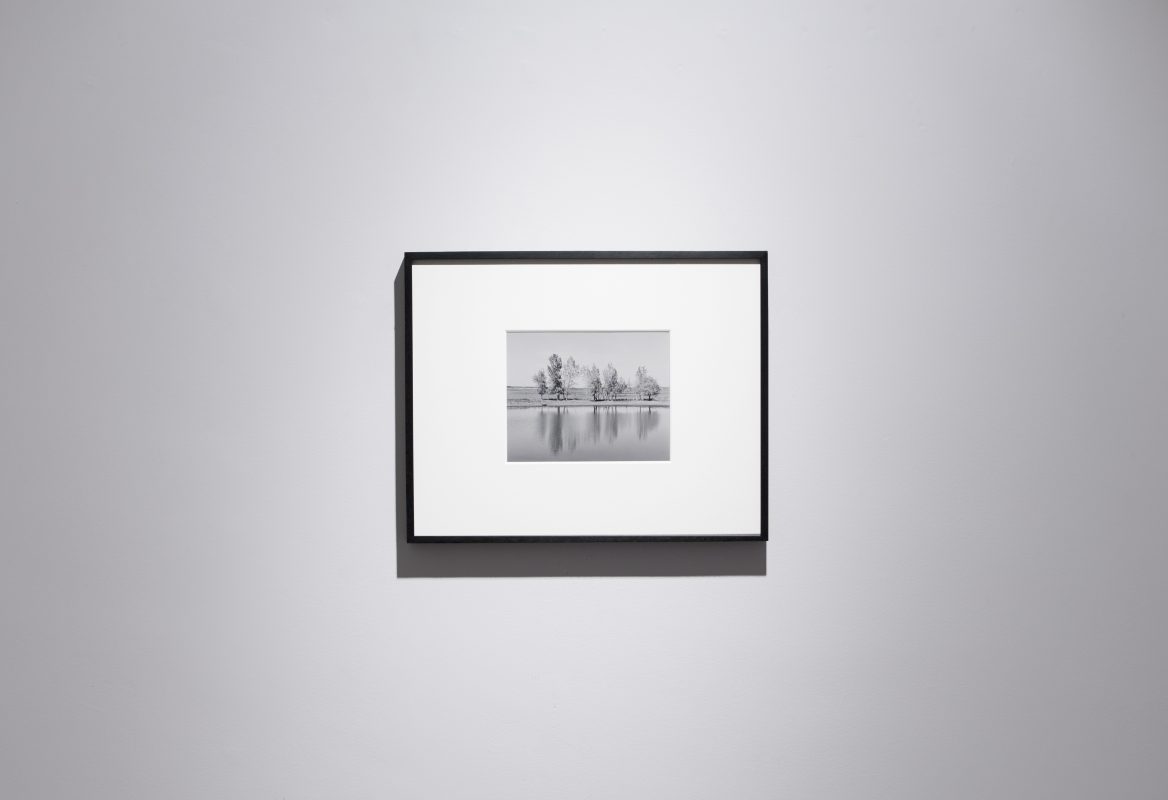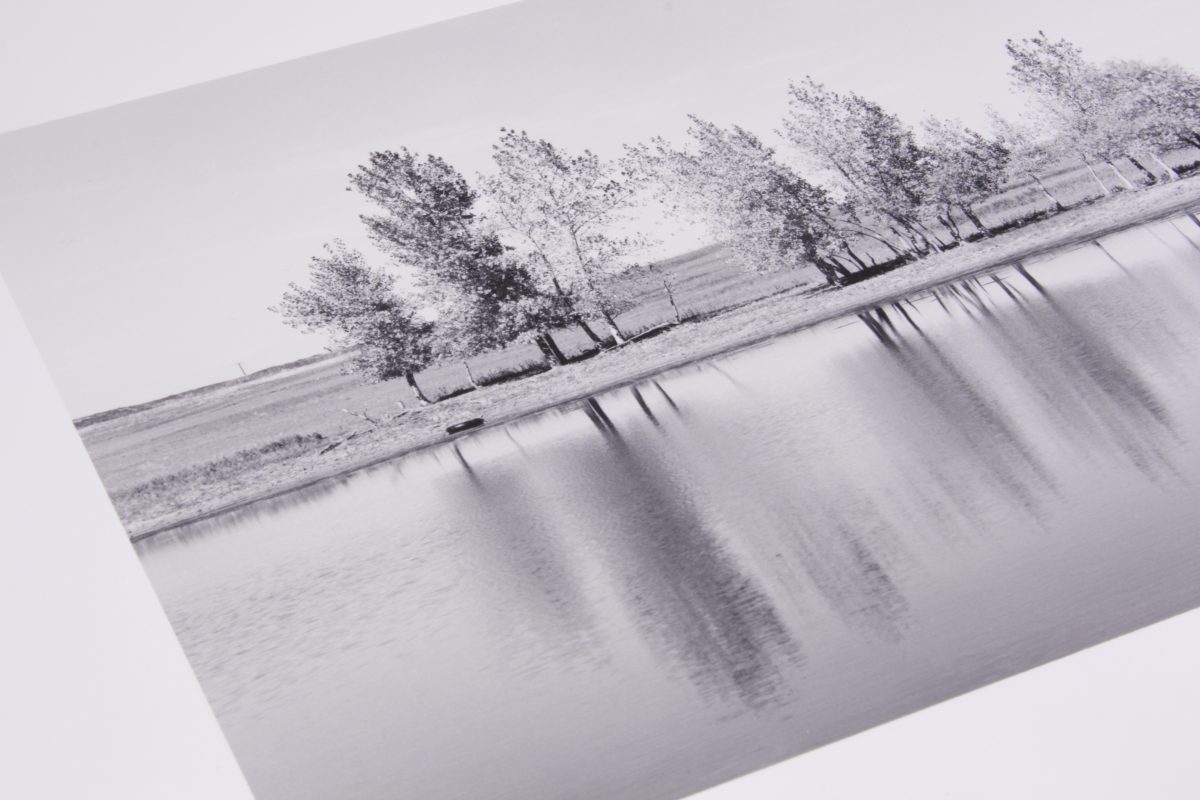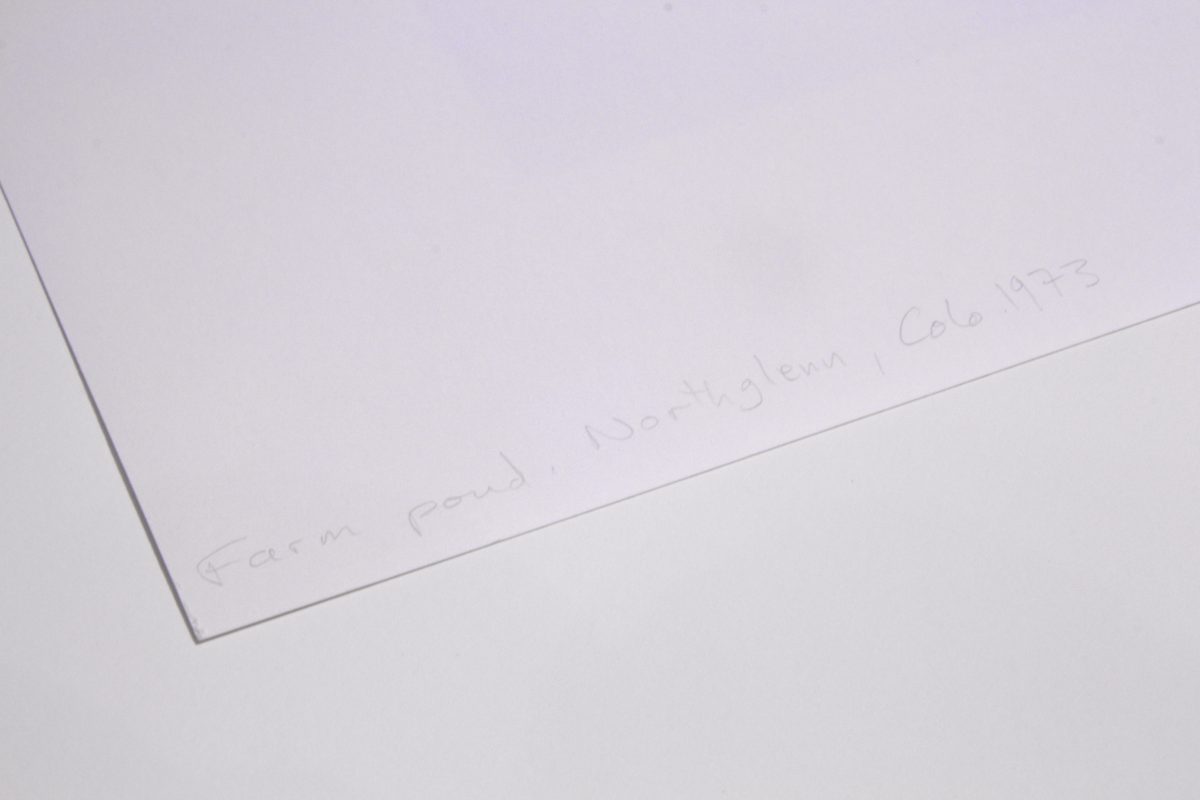A Farm Pond About to Be Destroyed by Earth-Moving Machinery, the North Edge of Denver, Colorado, 1973
ROBERT ADAMS
Signed, titled, dated and inscribed with photographer's copyright and print date in pencil on reverse
Silver gelatin print, printed 1996
Printed on 11 x 14 inch paper

Robert Adams is known for his work that investigates urban encroachment into the American landscape. For 45 years, Adams photographed the American west, recording both the expansive natural beauty found there, and the industrialisation consumerism and pollution that threatened to alter that beauty.
In the 1970s, Adams produced the series What We Bought, to which the present picture belongs. The series documented the development of the land surrounding Denver, Colorado, which was, at the time, one of the fastest growing suburban sprawls in America. Adams recorded the destruction and over-development of the landscape with unflinching precision. As the local population swelled, Adams photographed tract housing, telegraph poles, parking lots, shopping malls and billboard advertisements that pockmarked the once unspoiled land. He also, however, produced images that celebrated nature’s resilience, photographing the surviving landscapes, or those soon to disappear or change forever.
Adams recorded the destruction and over-development of the landscape with unflinching precision.
The present photograph depicts a quiet, pastoral scene in Northglenn, outside of Denver. The lyrical beauty of a copse reflected in gently rippling water is disrupted by the piece’s full title, Farm Pond About to be Destroyed by Earth Moving Machinery. This evocative, foreboding title disturbs the presumed narrative of a rural idyll. The viewer therefore understands the scene differently: as a scene of transition, a scene of mourning perhaps, but certainly a scene that will soon no longer exist. By combining text and image in this way, Adams successfully marries his social and aesthetic concerns.
The print is a vintage print, made by Adams in 1973. It is characteristically sized at 11 x 14 inches: Adams always preferred his photographs to be printed on a more intimate scale, allowing for closer, and therefore slower, viewing.





